
Discover: Education | Plan Your Visit
Education
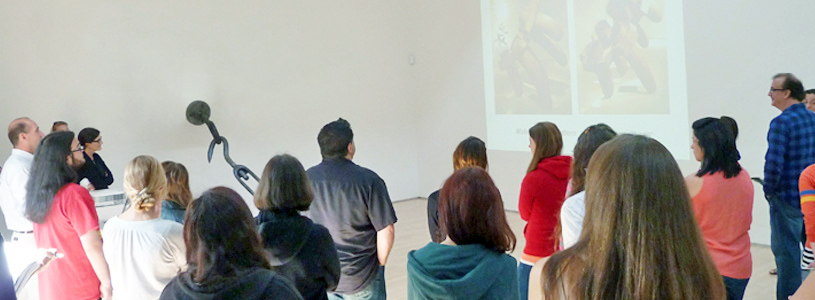
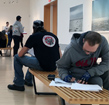
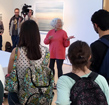
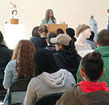
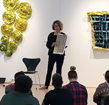
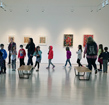
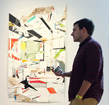
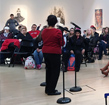
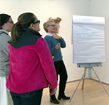
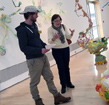

"How could I incorporate a visit into the structure of my syllabus? Isn't the Art Gallery for Art and Design Majors only?"
"I would feel uncomfortable taking my class to the gallery, because I don't know much about art."
If you have had any of these thoughts, you aren't alone. However, just one visit each semester to the gallery can have a life-long impact on your students.
Learning to use visual thinking in your courses can transform an ordinary assignment into one that can reveal deeper insights into the ways we look at and decipher pictorial information. We already know how to see, but learning how to look is another matter. Learning how to investigate, how to filter visual information into a meaningful message can mean the difference, in the case of a doctor and her patient, between life and death. Learning to look, using visual thinking strategies, can be extremely helpful in problem solving. A doctor who only sees a list of symptoms rather than the whole patient may miss important visual cues that could help with a diagnosis.
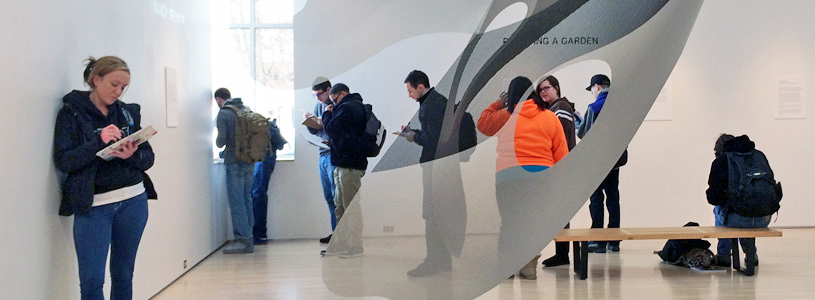
Some classroom exercises that make use of gallery programming are:
Create descriptive and comparative analyses using works of art
Using an investigative approach, students can explore the possible reasons that the curator brought these artists together. Starting with the gallery itself, students can look for patterns in the way the work has been arranged in the gallery. What could be the motivation for bringing these works together? What kinds of colors are used? Bright? Warm? Cool or subdued? How about shapes? Textures? Materials? Subject matter?
Look for mathematical or geometrical relationships
Mathematical or geometrical principles can be explored by looking at works and trying to decode some of the methods used and decisions made by the artist.
Study the proportions and scale of works in the room. Is the Golden Section or Fibonacci Sequence present? Why would that matter? Measure the size of the work. Does it contain squares? Circles? Are they actual or implied? Do shapes repeat themselves? How do your discoveries inform what you think might be going on inside the work of art? Beyond recognizable features, what could be the artist's intent? Can you know from the evidence presented? What can you bring to the conversation?
What other kinds of knowledge can you contribute to the experience?
There are many kinds of meaning and pathways to understanding. The viewer contributes meaning and relevance based on their own perceptions, and in some cases, over time; additional interpretations may be attributed to a work. An author may make references to things that she knows, that many other people may also know, but that every viewer may not know. For example, the 2000 Coen Brothers film Oh Brother, Where Art Thou? is loosely based on Homer's Odyssey. Many people may have watched and enjoyed the film without knowing very much about the myth of Ulysses. Context may be implied, but it is also more likely that understanding is derived from interpretation and extrapolation based on the viewers' contributions that are based on their own experiences, or associations that may be more personal and less "accurate" relative to the actual content of the work.
Create descriptive and comparative analyses using works of art
Using an investigative approach, students can explore the possible reasons that the curator brought these artists together. Starting with the gallery itself, students can look for patterns in the way the work has been arranged in the gallery. What could be the motivation for bringing these works together? What kinds of colors are used? Bright? Warm? Cool or subdued? How about shapes? Textures? Materials? Subject matter?
Look for mathematical or geometrical relationships
Mathematical or geometrical principles can be explored by looking at works and trying to decode some of the methods used and decisions made by the artist.
Study the proportions and scale of works in the room. Is the Golden Section or Fibonacci Sequence present? Why would that matter? Measure the size of the work. Does it contain squares? Circles? Are they actual or implied? Do shapes repeat themselves? How do your discoveries inform what you think might be going on inside the work of art? Beyond recognizable features, what could be the artist's intent? Can you know from the evidence presented? What can you bring to the conversation?
What other kinds of knowledge can you contribute to the experience?
There are many kinds of meaning and pathways to understanding. The viewer contributes meaning and relevance based on their own perceptions, and in some cases, over time; additional interpretations may be attributed to a work. An author may make references to things that she knows, that many other people may also know, but that every viewer may not know. For example, the 2000 Coen Brothers film Oh Brother, Where Art Thou? is loosely based on Homer's Odyssey. Many people may have watched and enjoyed the film without knowing very much about the myth of Ulysses. Context may be implied, but it is also more likely that understanding is derived from interpretation and extrapolation based on the viewers' contributions that are based on their own experiences, or associations that may be more personal and less "accurate" relative to the actual content of the work.

